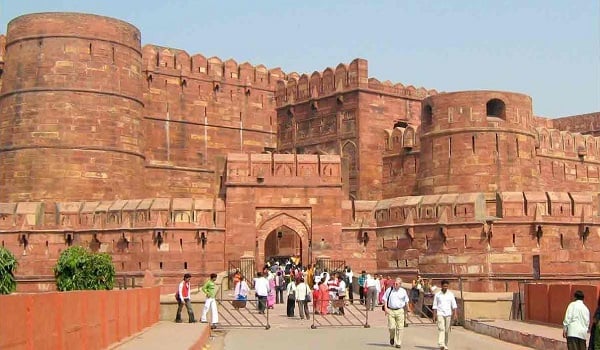Agra Fort: A Journey to World Heritage Status
Steeped in history and architectural marvel, the Agra Fort stands as a testament to India’s rich cultural heritage. Designated as a UNESCO World Heritage Site, this majestic fortification has not only weathered the sands of time but also captured the world’s attention with its unparalleled beauty and historical significance.

A Glimpse into History:
The Agra Fort, situated in the city of Agra, Uttar Pradesh, India, has a history that spans several centuries. Its origins can be traced back to the 11th century, with subsequent expansions and renovations carried out by different rulers. However, the fort as we know it today was primarily constructed during the reign of Emperor Akbar in the mid-16th century. It was strategically built on the banks of the Yamuna River, serving as both a military fortress and a royal residence for the Mughal emperors.
Date of Designation:
The recognition of the Agra Fort’s historical and cultural significance culminated on June 21, 1983, when it was officially inscribed on the UNESCO World Heritage List. This acknowledgement marked a significant milestone for India, acknowledging the fort’s architectural brilliance and its role in shaping the nation’s history.
Reasons Behind its Designation:
Several compelling reasons contributed to the Agra Fort’s inclusion in the esteemed list of UNESCO World Heritage Sites:
- Architectural Splendor: The Agra Fort is a stunning amalgamation of various architectural styles, showcasing the Mughal mastery of design. Its red sandstone and white marble structures, intricate carvings, and innovative features like the Diwan-i-Khas (Hall of Private Audience) reflect the aesthetic and technological advancements of the time.
- Historical Significance: As the main residence of Mughal emperors for generations, the Agra Fort played a pivotal role in shaping India’s history. It was witness to numerous important events, including power struggles, royal ceremonies, and administrative decisions that influenced the course of the empire.
- Cultural Heritage: The Agra Fort’s architecture is a testament to the cultural syncretism of the Mughal era, with influences from Persian, Islamic, and Indian architectural styles. Its diverse range of structures, including mosques, palaces, and gardens, represents the harmony and artistic brilliance of that era.
- Connection to the Taj Mahal: The Agra Fort’s proximity to the iconic Taj Mahal further enhances its significance. The fort not only served as the backdrop to the Taj Mahal but also played a role in its history. Emperor Shah Jahan, who commissioned the Taj Mahal, was held captive within the Agra Fort during his later years.
Impact of World Heritage Status:
The designation as a UNESCO World Heritage Site has had a profound impact on the Agra Fort and the surrounding area:
- Preservation and Conservation: The World Heritage status has prompted increased efforts for the preservation and maintenance of the fort. Conservation projects, including structural repairs and the restoration of artistic elements, have been undertaken to ensure the fort’s longevity for future generations.
- Tourism and Economy: The Agra Fort’s status as a World Heritage Site has significantly boosted tourism in the region. This influx of visitors has contributed to the local economy, generating employment opportunities and supporting the growth of hospitality and related industries.
- Cultural Awareness: The World Heritage designation has brought global attention to the cultural significance of the Agra Fort. It serves as an educational resource, raising awareness about India’s history, architectural achievements, and the need to protect and cherish such heritage sites.
The Agra Fort’s journey from its historical roots to becoming a UNESCO World Heritage Site is a remarkable tale of architectural brilliance, historical importance, and cultural significance. As it continues to stand proudly on the banks of the Yamuna River, the fort serves as a tangible link to India’s past, inspiring awe and admiration in all who visit and reminding us of the need to preserve our cultural heritage for generations to come.




